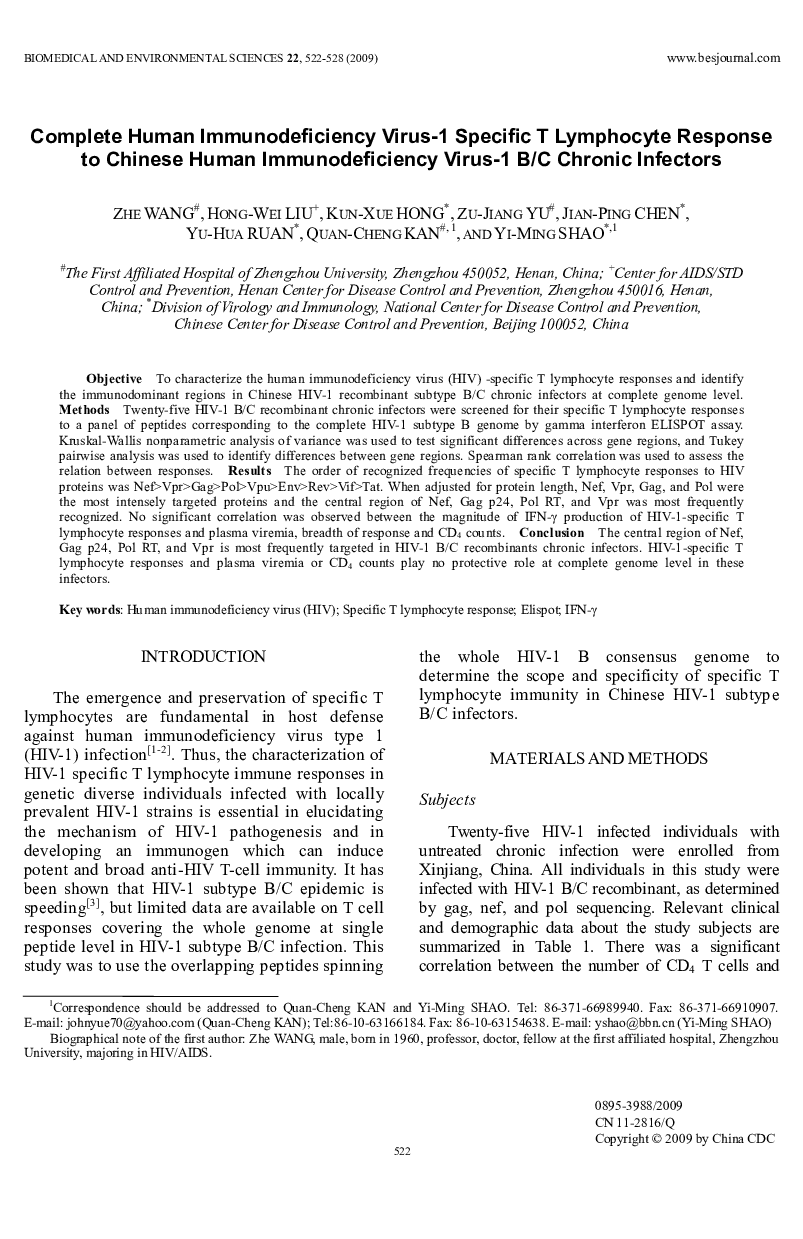| کد مقاله | کد نشریه | سال انتشار | مقاله انگلیسی | نسخه تمام متن |
|---|---|---|---|---|
| 4196181 | 1278665 | 2009 | 7 صفحه PDF | دانلود رایگان |

ObjectiveTo characterize the human immunodeficiency virus (HIV) -specific T lymphocyte responses and identify the immunodominant regions in Chinese HIV-1 recombinant subtype B/C chronic infectors at complete genome level.MethodsTwenty-five HIV-1 B/C recombinant chronic infectors were screened for their specific T lymphocyte responses to a panel of peptides corresponding to the complete HIV-1 subtype B genome by gamma interferon ELISPOT assay. Kruskal-Wallis nonparametric analysis of variance was used to test significant differences across gene regions, and Tukey pairwise analysis was used to identify differences between gene regions. Spearman rank correlation was used to assess the relation between responses.ResultsThe order of recognized frequencies of specific T lymphocyte responses to HIV proteins was Nef>Vpr>Gag>Pol>Vpu>Env>Rev>Vif>Tat. When adjusted for protein length, Nef, Vpr, Gag, and Pol were the most intensely targeted proteins and the central region of Nef, Gag p24, Pol RT, and Vpr was most frequently recognized. No significant correlation was observed between the magnitude of IFN-γ production of HIV-1-specific T lymphocyte responses and plasma viremia, breadth of response and CD4 counts.ConclusionThe central region of Nef, Gag p24, Pol RT, and Vpr is most frequently targeted in HIV-1 B/C recombinants chronic infectors. HIV-1-specific T lymphocyte responses and plasma viremia or CD4 counts play no protective role at complete genome level in these infectors.
Journal: Biomedical and Environmental Sciences - Volume 22, Issue 6, December 2009, Pages 522-528